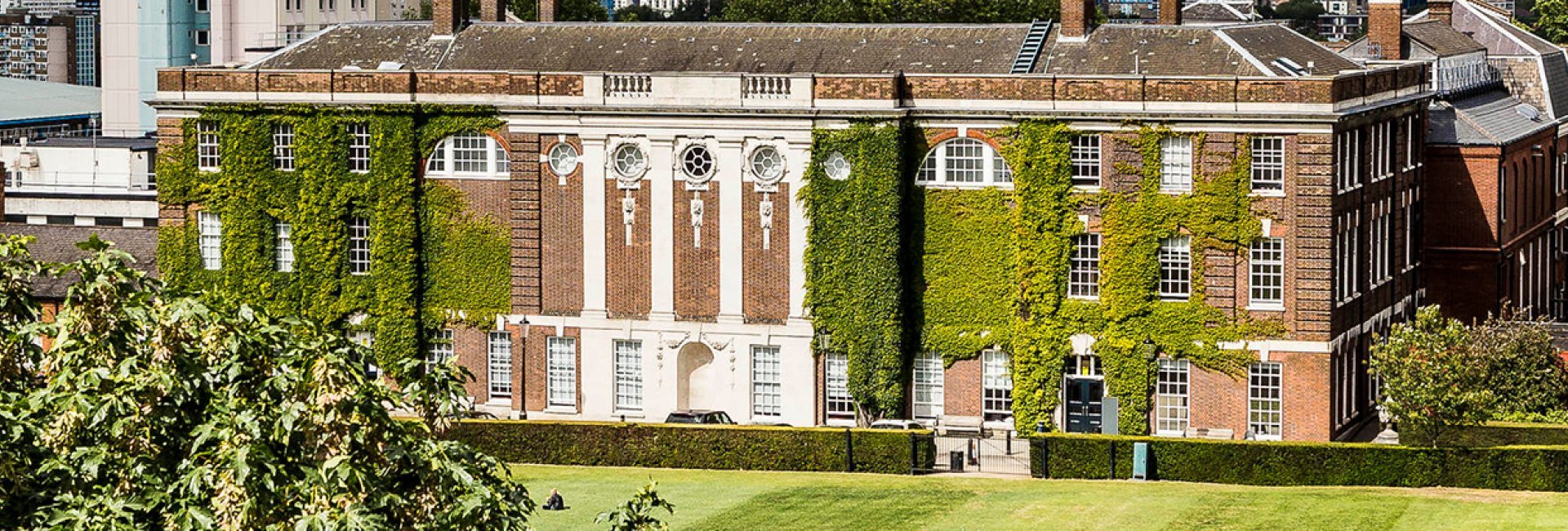Goldsmiths, University of London - Undergraduate Open Day
21 Jun 2025, 11:00
New Cross, London

Make and study contemporary art in a dynamic, critical and interdisciplinary environment.
Why study BA Fine Art at Goldsmiths
This degree will equip you with creative, interpretive, critical and analytical skills, so that you can participate in and contribute to the expanding field of contemporary art.
You'll make and study contemporary art in a dynamic, critical and interdisciplinary environment.
We'll equip you with the skills that will help you develop independent thought and confidence in your practice, as well as transferable skills suitable for employment in the creative industries.
You'll have your own studio space from day one, and will have access to excellent facilities including specialist art practice areas.
All staff on the programme are practising artists, curators and writers, here to respond to the work that you make and to help you understand how it contributes to – and challenges – the critical debates that exist in the study area and beyond.
Since 1990, former Goldsmiths students have been nominated for the Turner Prize more than 30 times, and have won the prize on 8 occasions.
Please note the BA Fine Art only accepts applications for first year entry.
The programme has two elements:
Studio Practice (75% of the course)
You’ll have your own studio space from day one, and will have access to excellent facilities and technical advice.
Studios are not divided by year or discipline, so you will be studying alongside students from all stages of the programme working in a wide variety of media, including:
Drawing
Painting
Constructed textiles
Printmaking
Sculpture
Stitch
Fabric
Photography
Printed textiles
Video
Installation
Performance.
Studio teaching is supported and complemented by workshop areas, which will introduce you to the techniques and skills relevant to the practical development of your work.
You’ll have regular individual and group tutorials with your own tutor, with other tutors, and with visiting artists. You will also present your work for discussion with a larger group of students each term.
Critical Studies (25% of the course)
The lecture and seminar series in Year 1 offers a space for exploring and examining the historical and critical context in which art is made, seen and understood.
The seminar options from which you can choose in Year 2 engage and extend your critical skills, enabling you to develop your ability to analyse, judge and write about contemporary art.
Tutorials will guide your essay writing in Years 1 and 2, and will support the completion of your dissertation in Year 3.
All staff on the programme will support your development and creativity and help you acquire independent learning skills. This approach requires you to be committed, to thrive on constructive criticism exchanged between staff and students, and to participate in discussing your own work and that of others.
Please note that due to staff research commitments not all of these modules may be available every year.
Studio practice coursework is continuously assessed through individual tutorials and group seminars. This is complemented by studio presentations at Year 1, viva voce at Year 2, and a final exhibition at Year 3. Critical Studies is assessed through essays (Years 1 and 2) and a dissertation (Year 3).

Learn what it's like to study at Goldsmiths, University of London. From key stats to campus highlights, open days, and more - find everything you need to know here.
The following entry points are available for this course:
Please note, students applying directly or recently from A-Levels who have not completed an Art and Design Foundation or BTEC Extended Diploma in Art and Design will not be eligible for this programme.
Mature students without formal qualifications who have relevant experience are also welcomed.
| Test | Grade | Additional details |
|---|---|---|
| IELTS (Academic) | 6.5 | with a 6.5 in writing and no element lower than 6.0 |
We pay careful attention to your personal statement which is your opportunity to demonstrate your interest in your desired subject. Portfolio programmes offer you the opportunity to demonstrate your potential in your desired subject. Referees are also welcome to include any relevant contextual comments around your academic achievements. We consider all these things when making a decision as well as your qualifications and grades. If you are unsure about applying, we would be happy to advise you.
This section shows the range of grades students were previously accepted with - learn more. It is designed to support your research but does not guarantee whether you will or won't get a place. Admissions teams consider various factors, including interviews, subject requirements, and entrance tests. Check all course entry requirements for eligibility.
Students aged 17/18 who applied to this course were offered a place.
See how students with your grades have been accepted onto this course in the past.
Operated by the Office for Students
Employment after 15 months (Most common jobs)
Go onto work and study
The number of student respondents and response rates can be important in interpreting the data – it is important to note your experience may be different from theirs. This data will be based on the subject area rather than the specific course. Read more about this data on the Discover Uni website.
No fee information has been provided for this course
Tuition fee status depends on a number of criteria and varies according to where in the UK you will study. For further guidance on the criteria for home or overseas tuition fees, please refer to the UKCISA website.
To find out more about fees and funding, please check our undergraduate fees guidance or contact the Fees Office https://www.gold.ac.uk/ug/fees-funding/
New Cross
Lewisham
SE14 6NW
Visit our website Visit our course page
Email:course-info@gold.ac.uk
Phone:020 7078 5300
Email:ahhub@gold.ac.uk
Phone:020 8228 5550
Email:admissions@gold.ac.uk
Phone:020 7078 5300